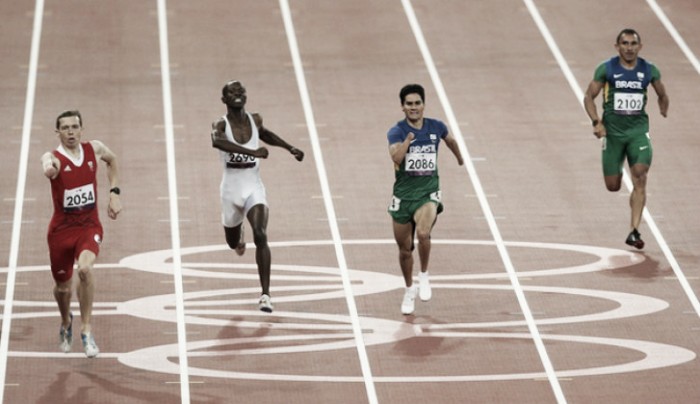Atletics is present in the Paralympics program since the first edition of the Games in Rome 1960. It is divided between the track (T) and field (F) events. On the track, take place the following competitions: race, relay and marathon and, in the field, shot put, discus and javelin, and jumping distance, height and triple. Participate in athleticism people with physical, visual and intellectual disabilities.
In the discus, athletes throw of 0.75 and 2kg discs and have three chances to hit them as far as possible. The same happens in javelin, weighing between 500 and 800g. And the shot put events are practiced with sticks 40cm weighing 2 to 7.36kg. All categories have adaptations according to the deficiency of each competitor.
In the long jump athletes have three chances to achieve the greatest possible distance in a sand pit, running from a 40 meters track to pick up impulse. The same three chances they have in the high jump to reach the greatest height above a bar (or slat) horizontal.
The races are held on routes of 100, 200, 400, 800, 1,500 and 5,000 meters. Athletes must travel these distances in the shortest time possible and wins who cross first the finish line.
In the relay competition, teams of four athletes run 4x100 and 4x400 meters. Each of the athletes start to run only after receiving his stick from the hands of those who dropped previously. Except for competitions involving wheelchair users, where there is no stick; the relay starts from the touch of the hands of competitors.
In the marathon, which, in Rio 2016 will pass for several sightseeing, such as the Copacabana Fort, the athletes run through a path of 42.195km.
All competitions are divided into subcategories respecting the needs of each athlete. In the field events, F1 through F13 correspond to the visually impaired; F20, intellectual disabilities; F31 through F34, cerebral palsy who use wheelchairs and F35 through F38, paralyzed ambulant; F40, people with dwarfism; F41 through F46 amputees and F51 through F58, wheelchair users.
On the track, T1 through T13 representing the visually impaired; T20, intellectual disabilities; T31 through T34, cerebral palsy who use wheelchairs and T35 through T38 paralyzed ambulant; T41 through T46 amputees, and T51 through T54 wheelchair users.
In the men's class, four Brazilians stood out with gold in London Paralympic Games. Felipe Gomes won the medal in the 200m T11, Alan Fonteles in the 200m T44, Yohansson Nascimento in the 200m T46 and Tito Sena in marathon T46.
Terezinha Guilhermina won the most precious medal in two events: the 100m and 200m T11. Sirlene Coelho assured the top spot of the podium with the Brazilian flag in weight release the F37/38.
In the 2012 Paralympic Games, the biggest medalists were the Chinese, who took home 33 golds, 29 silvers and 24 bronzes. Behind them are Russia with 36 medals and the UK with 29. Brazil was in seventh place in the athletics medal table with a total of 18 medals, these being seven golds, eight silvers and three bronzes.
The competitions, like the Olympics, will be held at Engenhão Stadium, which is adapted to all the track and field competitions. The marathon will take the starting line and arrival at the Copacabana Fort. The competitions start on September 8th, Thursday from 10 am.





































